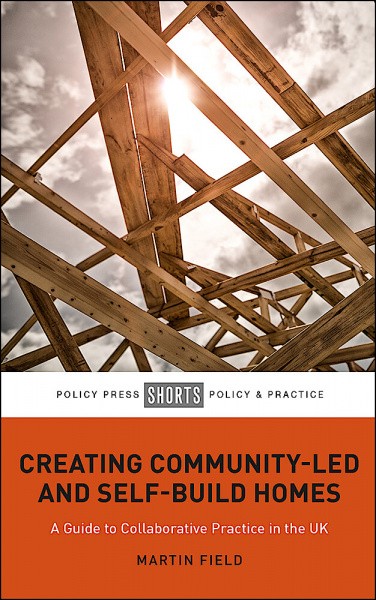Creating Community-Led and Self-Build Homes: A guide to collaborative practice in the UK Martin Field (Policy Press, £9.99)
The myriad demands for policy makers to ‘build back better’ as the UK prepares to repair the economic damage of the Covid-19 pandemic reflect the number of sectors which are perceived to be ‘broken’ or dominated by outdated models.
Many of these failings were laid bare by the pandemic itself – not least housing, with the government finding temporary accommodation for the nation’s homeless, and the pleas for help from locked-down freelance workers struggling to keep up with exorbitant rents in the private sector.

Right on cue comes this survey of alternative models of housing from Martin Field, a researcher who specialises in housing at De Montfort University. The common theme he identifies in these models is a wish to take control of the creation of homes and communities and a dissatisfaction with established models – such a the private market and state-run housing – which can deny people that control.
These alternatives are not all co-operative or communal: Field discuss the appeal of self-building with households going it alone to create the home they want. But self builds also include group efforts as communities come together to develop a shared site.
And co-operation is not the only values-led ethos on offer: the book considers the growth of the low-impact and eco-living models; often this overlaps with the ideas of co-operation and – for instance with Lilac, a low-impact co-housing project in Leeds.
But the co-operative ethos “has been hugely influential in the history of political change in the UK and has been a core determinant for shaping egalitarian ways that people and organisations might work together”.
In terms of housing it has been “crucial in creating property that is owned and/or controlled by a democratic membership and engagement of all the resident households” but represents just 0.6% of UK housing stock despite “the evident appeal” of the model.
Other ownership models include the community land trust (CLT) which in recent years has been used to maximise the provision of more affordable housing – with asset locks to keep them that way. Field sees forerunners in the community based trusts behind the UK’s garden city movement although the CLT model itself was imported from the USA 20 years ago, bringing “a new impetus to local communities that want to have more influence and control over local housing resources”.
The section on co-housing – a collaborative project to shape a wider neighbourhood that combines self-contained dwellings and shared spaces – points to choices that go deeper than ownership models: the intention is “the creation of a shared identity and a supportive neighbourhood life“ but warns there is a “lack of familiarity in the UK of the kind of community dynamics that enable co-housing residents to thrive in their day-to-day lives“. Finding suitable sites is also a challenge; but Field Iists a number of successes, including Lilac.
Looking at ways to grow these sectors, Field stresses the importance of looking at best practice overseas and points to successful attempts in Europe to build community-led housing at a bigger scale; and draws up a list of benchmarks to measure the progress of a development.
With a set of examples for each model and a comprehensive list – with contact details – of relevant organisations, this is a useful beginners guide to collaborative housing practices; it is also a timely plea for a more supportive planning environment. “Stewardship and influence from local people is crucial to creating proper places in which communities can thrive,” says Field.

